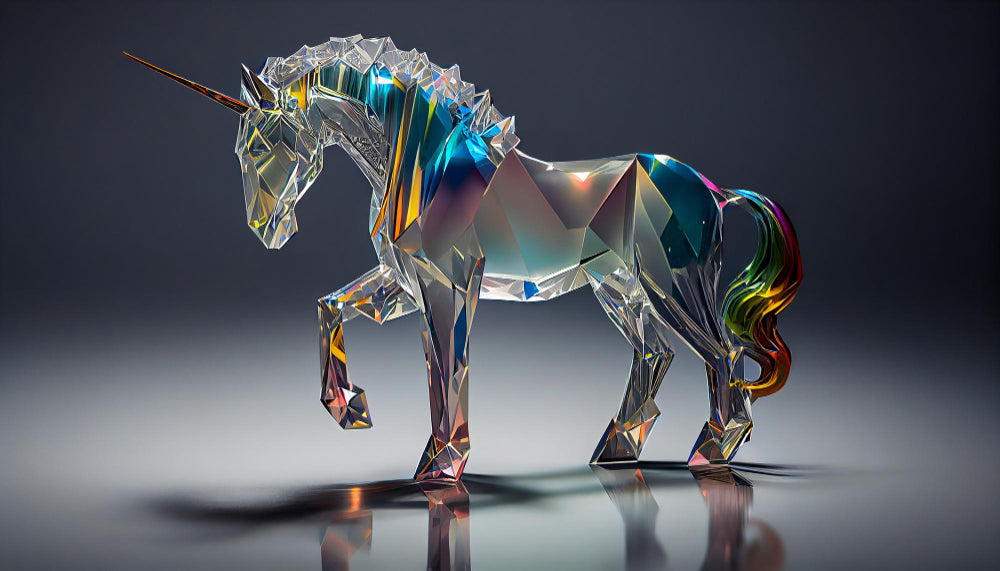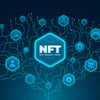Breaking Boundaries: Exploring the Intersection of 3D Printing and NFTs

Introduction
Discover the transformative blend of 3D printing and NFT technology, revolutionizing creativity and innovation. This powerful fusion allows artists and designers to create and sell limited-edition, tangible objects linked to NFTs, ensuring authenticity and ownership. Industries from fashion to architecture are embracing this combination, while decentralizing production and reducing waste. The integration of 3D printing and NFTs also expands the possibilities for collectibles and memorabilia. This groundbreaking synergy bridges the physical and digital worlds, pushing the boundaries of creativity and ownership in unprecedented ways.
In this blog, we delve into the groundbreaking possibilities that arise from combining these two cutting-edge technologies, highlighting their impact on various industries and the creative landscape.
Understanding 3D Printing
3D printing, also known as additive manufacturing, is a process that creates three-dimensional objects by layering materials based on a digital model. It is a transformative technology that has rapidly evolved over the years, enabling the creation of complex and customized objects with ease.
Since its inception, 3D printing has witnessed significant advancements, making it more accessible and versatile. Early 3D printers were limited in terms of materials and precision, but today, we have a wide range of materials such as plastics, metals, ceramics, and even organic compounds that can be used for printing. Moreover, improvements in printing speed and accuracy have further expanded the possibilities of this technology.
The applications of 3D printing span across various industries, revolutionizing the way we manufacture and produce goods. In the aerospace and automotive industries, 3D printing is used to create lightweight and intricate components, reducing costs and enhancing efficiency. In healthcare, it enables the production of patient-specific implants and prosthetics, improving treatment outcomes. Additionally, 3D printing finds applications in architecture, fashion, consumer products, and many other sectors. 3D modeling for 3D printing has garnered popularity across industries for being useful in marketing and advertising of the products.

Introducing NFTs
The rise of NFTs (Non-Fungible Tokens) has introduced a revolutionary concept in the digital realm. These unique digital assets leverage blockchain technology to establish ownership and traceability for various forms of digital content. They represent one-of-a-kind items, including digital art pieces, music, videos, virtual real estate, and more.
In recent years, NFTs have gained immense popularity, particularly in the digital art world. They have transformed the way art is created, bought, and sold. With NFTs, artists now have the ability to tokenize their digital creations, essentially turning them into verifiable digital assets. This process allows artists to prove the authenticity and ownership of their work, as each NFT carries a unique identifier on the blockchain.
This disruption has challenged traditional notions of value and the role of intermediaries in the art market. Artists can now directly monetize their work without relying on galleries or agents. The ability to sell their digital creations as NFTs provides a new revenue stream and a direct connection with collectors and enthusiasts. Additionally, the immutable nature of the blockchain ensures the permanent record of ownership and a transparent transaction history.
NFTs have also opened up opportunities for creators beyond the art world. Musicians can release limited-edition albums or tracks as NFTs, offering unique perks to their most dedicated fans. Content creators, such as video producers and influencers, can tokenize their work, providing exclusive access or special privileges to NFT holders. Virtual real estate in virtual reality (VR) worlds can be bought and sold as NFTs, enabling users to own and customize their digital spaces.
The Synergy of 3D Printing and NFTs
The synergy between 3D printing and NFTs is unlocking vast creative possibilities and transforming business models. By merging these technologies, we can now produce tangible objects through 3D printing and assign them a digital representation as NFTs. This fusion enhances the value and provenance of 3D-printed items while opening up new avenues for innovation.
NFTs play a crucial role in this combination by allowing creators to attach metadata and ownership information to physical objects made through 3D printing. By minting an NFT that corresponds to a specific 3D-printed item, creators can establish authenticity and ownership in the digital realm. This additional layer of verification adds value and desirability to 3D-printed objects, appealing to collectors and enthusiasts.
Artists and designers have already embraced the fusion of 3D printing and NFTs, pushing creative boundaries and bridging the gap between the physical and digital realms. They utilize NFTs to offer limited-edition digital collectibles tied to physical 3D-printed artworks. This approach creates scarcity and exclusivity, attracting collectors who appreciate the unique combination of craftsmanship and digital innovation.
Moreover, the combination of 3D printing and NFTs enables new business models to emerge. Instead of relying solely on traditional manufacturing and distribution processes, artists and creators can sell their digital designs as NFTs, allowing customers to 3D print their own copies. This decentralized approach empowers individuals while reducing waste and environmental impact.
The fusion of 3D printing and NFTs is not limited to the art world alone. Industries such as fashion, jewelry, architecture, and automotive are also exploring the potential of this combination. Fashion designers can bring their digital designs to life through 3D printing, attaching an NFT to the physical garment to ensure uniqueness and provenance. Architects can showcase their visionary designs as 3D-printed models, enhancing their value by linking them to NFTs that grant exclusive ownership rights.
The synergy between 3D printing and NFT technology is revolutionizing creativity, value, and ownership. By merging the physicality of 3D-printed objects with the verifiability and uniqueness of NFTs, this fusion paves the way for new artistic expressions, business models, and sustainable approaches. The possibilities are boundless, and we are only scratching the surface of what this transformative combination can achieve.

Expanding Creative Horizons
Influence of 3D Printing and NFTs on the Art World
The synergy between 3D printing and NFTs has had a profound impact on the art world. Artists now have the ability to combine traditional artistic techniques with digital design and fabrication, resulting in awe-inspiring and truly original artworks. This fusion of mediums has given rise to a new wave of creativity, attracting both established artists and emerging talents alike. This convergence of 3D printing and NFTs has sparked a reimagining of the art market, challenging traditional notions of value and ownership. Digital artists can now create limited-edition NFTs linked to physical 3D-printed artworks, establishing a tangible connection between the digital and physical realms. Collectors are drawn to the unique blend of craftsmanship, digital innovation, and verifiable authenticity that this combination offers, leading to new opportunities for artists to monetize their work and engage with a global audience.
Leveraging the Combination for Unique and Limited Edition Artworks
Artists are harnessing the power of 3D printing and NFTs to create unique and limited edition artworks that bridge the gap between the physical and digital realms. By offering exclusive editions of their work as NFTs, artists can establish scarcity and uniqueness, captivating collectors who appreciate the innovation and craftsmanship involved. This approach has transformed the art market, bringing new possibilities for artists to connect with their audience and monetize their creations.
Democratization of Art Through Fractional Ownership of 3D-Printed NFTs
Fractional ownership, made possible by NFTs, has democratized the art world even further. Collectors can now own a fraction of an artwork represented by an NFT, allowing them to participate in the ownership and potential appreciation of high-value pieces. This fractional ownership model empowers a broader audience to invest in art and encourages collaboration among enthusiasts, fostering a more inclusive and vibrant creative community.
Revolutionizing Industries
Impact of 3D Printing and NFTs on Various Industries
Beyond the art world, the combination of 3D printing and NFTs is revolutionizing industries such as fashion, automotive, and healthcare. In fashion, designers can create unique and personalized garments using 3D printing, while NFTs enable the creation of digital fashion items and virtual wardrobes. In the automotive sector, 3D printing allows for rapid prototyping and customization of components, while NFTs ensure the traceability and authenticity of spare parts. Healthcare benefits from 3D printing through patient-specific implants, and NFTs enhance the security and integrity of medical data.
Transforming Manufacturing Processes and Supply Chains
The integration of 3D printing and NFTs is transforming traditional manufacturing processes and supply chains. 3D printing enables on-demand production, reducing the need for large-scale manufacturing and inventory. With NFTs, manufacturers can securely track and verify the origins and authenticity of raw materials and components, ensuring transparency and accountability throughout the supply chain. This streamlined approach has the potential to revolutionize industries by enabling more sustainable practices and reducing waste.
Customization and Personalization Offered by 3D Printing and NFTs
One of the key advantages of combining 3D printing and NFTs is the ability to offer customization and personalization at scale. Whether it's custom-fit wearables, personalized consumer products, or tailor-made medical implants, 3D printing allows for the creation of bespoke objects. By linking these physical objects to NFTs, individuals can own unique digital representations of their customized items, adding an extra layer of personal connection and value. Through interactive platforms and marketplaces, individuals can collaborate with designers and artists to customize and modify digital designs, which can then be 3D printed and associated with an NFT that represents their unique creation. This level of customization not only enhances the user experience but also fosters a deeper sense of ownership and emotional attachment to the products.
Challenges and Future Outlook
Current Challenges and Limitations of Combining 3D Printing and NFTs:
While the combination of 3D printing and NFTs presents tremendous opportunities, there are still challenges to overcome. Technological limitations, such as material choices, printing speed, and resolution, need to be addressed to achieve higher quality and scalability. Additionally, issues related to intellectual property rights, copyright infringement, and the environmental impact of 3D printing need careful consideration and regulation.
Future Possibilities and Advancements in this Interdisciplinary Field:
Looking ahead, the intersection of 3D printing and NFTs holds immense promise. Advancements in materials, printing techniques, and blockchain technology will unlock new possibilities for the creation and ownership of 3D-printed objects. We can envision a future where individuals have seamless access to customized, sustainably produced goods, all while enjoying the benefits of verifiable ownership through NFTs. Collaboration between artists, designers, technologists, and industry experts will drive innovation and push the boundaries of what is possible.
Emerging Trends and Potential Collaborations:
The 3D printing and NFT communities are witnessing a surge in collaboration and experimentation. Artists, designers, and technologists are coming together to explore the potential of this intersection, creating new platforms, marketplaces, and collaborative projects. This vibrant ecosystem is constantly evolving, and emerging trends such as augmented reality (AR) integration, virtual galleries, and cross-disciplinary collaborations are shaping the future of this interdisciplinary field.

Conclusion
In conclusion, the fusion of 3D printing and NFT technology has ushered in a new era of creativity, transforming industries, and revolutionizing the art world. By combining the tangible nature of 3D-printed objects with the unique properties of NFTs, we are breaking boundaries and pushing the limits of what is possible. The opportunities for customization, personalization, and digital ownership are reshaping traditional notions of value and authenticity. As we navigate the challenges and embrace future advancements, let us explore the innovative opportunities that arise from this fusion and embrace the transformative power of 3D printing and NFTs.
-
Posted in
3d NFT, 3d printing




